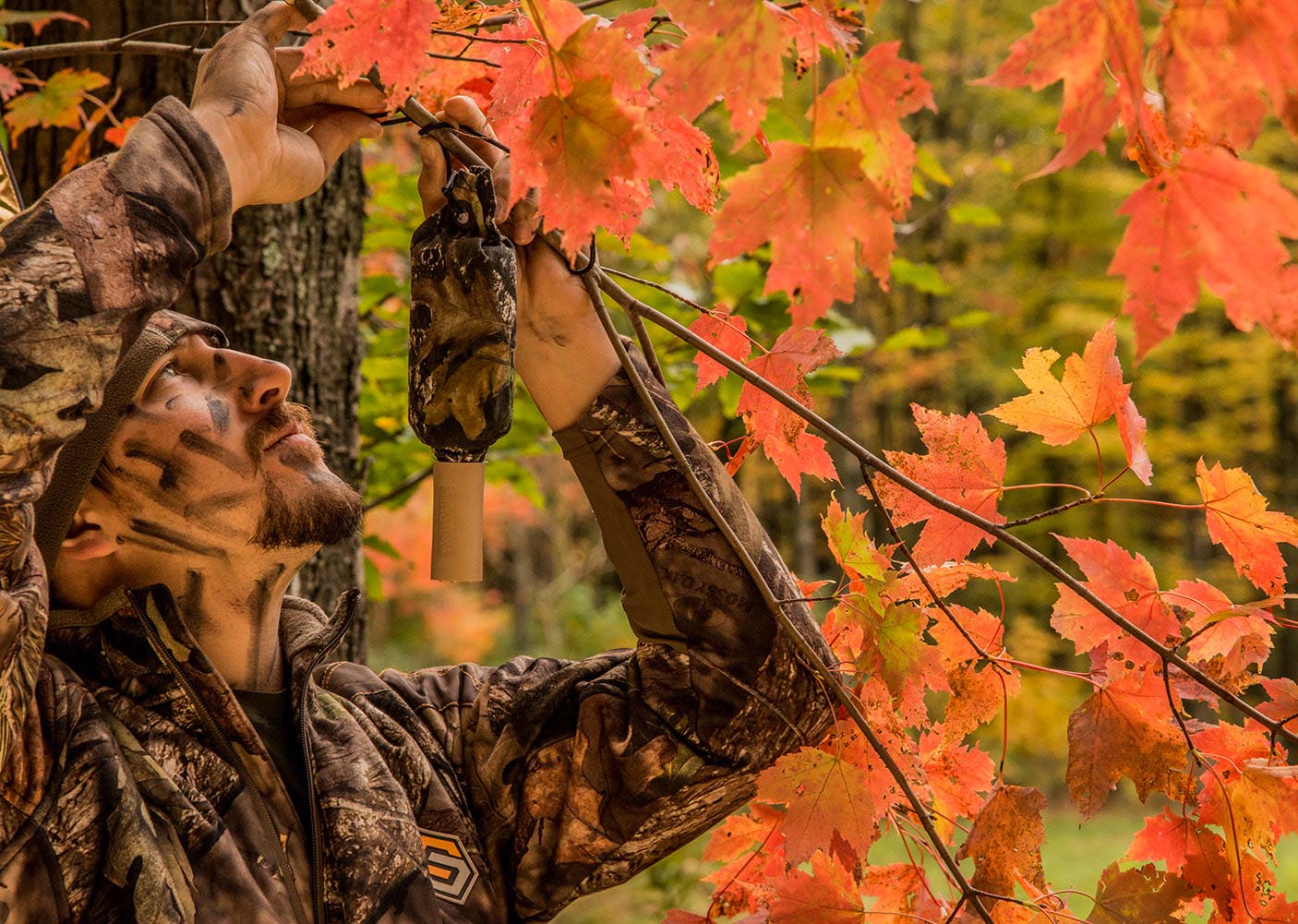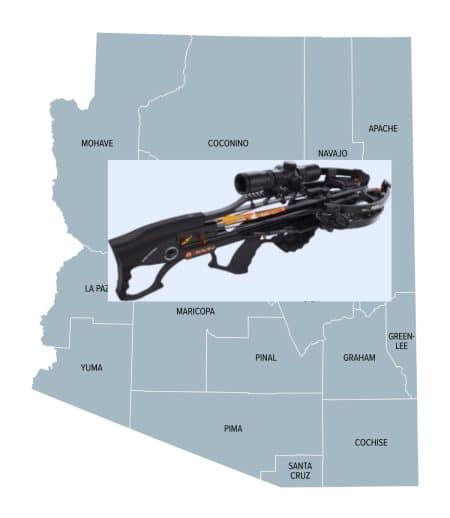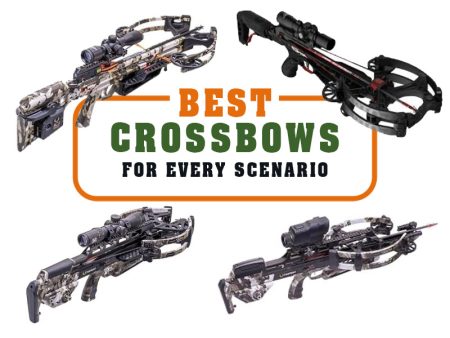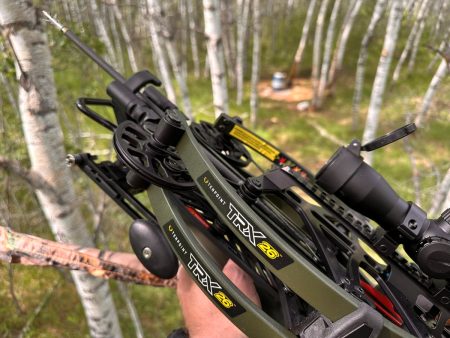If someone asks me to say the first thing that comes to mind when I think of deer hunting, my answer is summed up in one word: Scent.
Scent is the most popular form of deer attractants.
Many aspects of the world of deer hunting revolve around scent. As hunters, we must eliminate our human odors and any foreign smells that may cling to our clothes, gear or anything else we take into the field. For the deer, every aspect of their daily lives, 365 days of the year, revolves around their nose and what they smell. Scent is how they identify and communicate with one another. It is how they steer away from danger. It is how they find food to survive.
Since my teenage years, when I had the opportunity to witness a mature buck destroy a mock scrape, I had made earlier that day, I’ve been obsessed with using scent and lures during the pre-rut stages and during the rut to help draw mature bucks into bow range. After that buck made me believe in scents so many years ago, I’ve used various smells, countless brands, and every technique that’s been shared with me regarding scent. Yet, even after all my trial and error, I am always drawn back to my first success with mock scrapes.
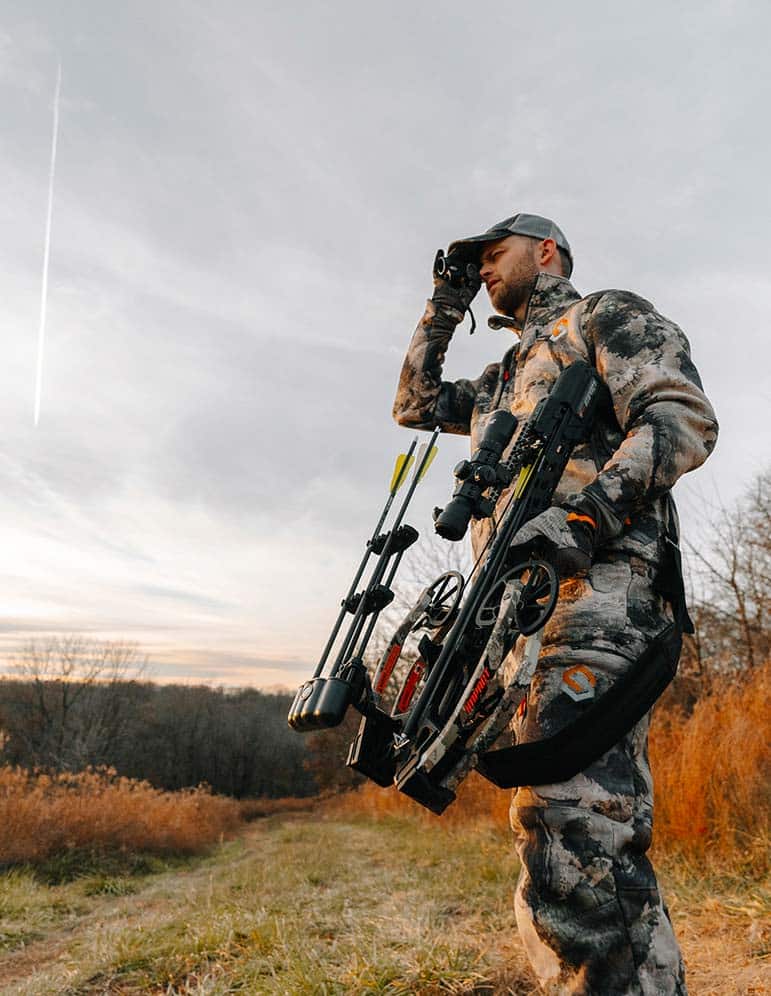
What’s a Mock Scrape?
The main objectives in creating a mock scrape are attracting mature bucks to a specific area, keeping them drawn to that area, and getting bucks into shooting range. The biggest questions many bow hunters ask when they learn about and hunt with mock scrapes are: Where is the best location to make one; and how do I get bucks to use the scrapes?
To understand the use of mock scrapes, it is vital to know what a mock scrape truly is. In the late 1970s, hunters began noticing that using deer scent in a manmade (or a natural scrape made by a Whitetail buck) could increase buck movement in their hunting areas.
Back then, many how-to strategies for creating mock scrapes focused only on the timeframe of the rut. As years passed, many hunters have come to use modern technologies to gather data (such as game cameras and bottled deer scents) to determine that Whitetail deer use scrapes throughout the year. While we now know that deer use scrapes throughout the year, the fact remains that deer scents and lures are used most during the October pre-rut and during the November rut period. Deer scents are used primarily in those two months because that’s also when deer use the scrapes the most, too.
The How-To
A mock scrape is made by scraping the dirt. The next step is pouring some scent on the ground, then creating a licking branch (that also has scent on it) that is hung over top of the scrape. It’s here where deer pass their smells along to other deer.
During the pre-rut, a doe will often visit the mock scrape and urinate there to let bucks know she is in the area. Various bucks will also use the scrape by urinating in the same area. They then also use their forehead glands to rub the licking branch and spread their scent to other bucks. The more deer that visit the scrape, the more a domino effect occurs, causing even more bucks to revisit the site to refresh their scent. When a mock scrape area has been designated, hunters can place a blind or treestand near the area and wait for the timing to be right.
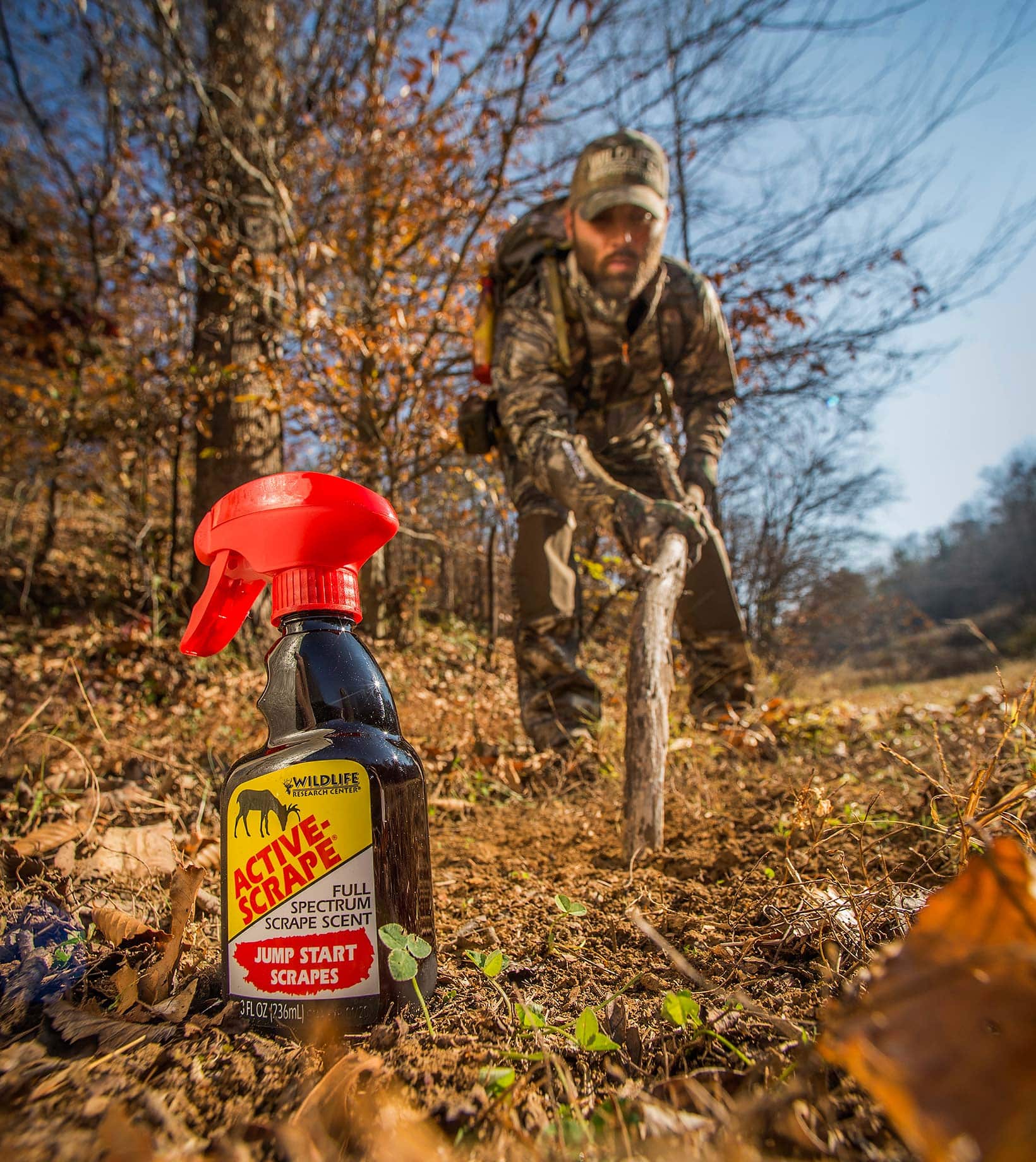
Where to Place Them
When a Whitetail buck makes a scrape on its own, it will often select old logging roads, trails and the edges of timber areas or fields. Using these areas lets the scents carry throughout a wide area, drawing does and bucks in to investigate.
When a hunter creates a mock scrape, he or she should find the areas where natural scrapes have been observed. Refreshing a natural scrape with scents and lures or creating a scrape a few feet from a natural scrape also helps trigger the territorial instincts of bucks. They will assume that another buck has eased into that territory and that he is trying to attract does.
As a bow hunter, I often use mock scrapes to help draw bucks into a closer range. After years of using different hunting tactics and methods with mock scrapes, I began creating a strategic scrape placement plan. That significantly increased my crossbow hunting success.
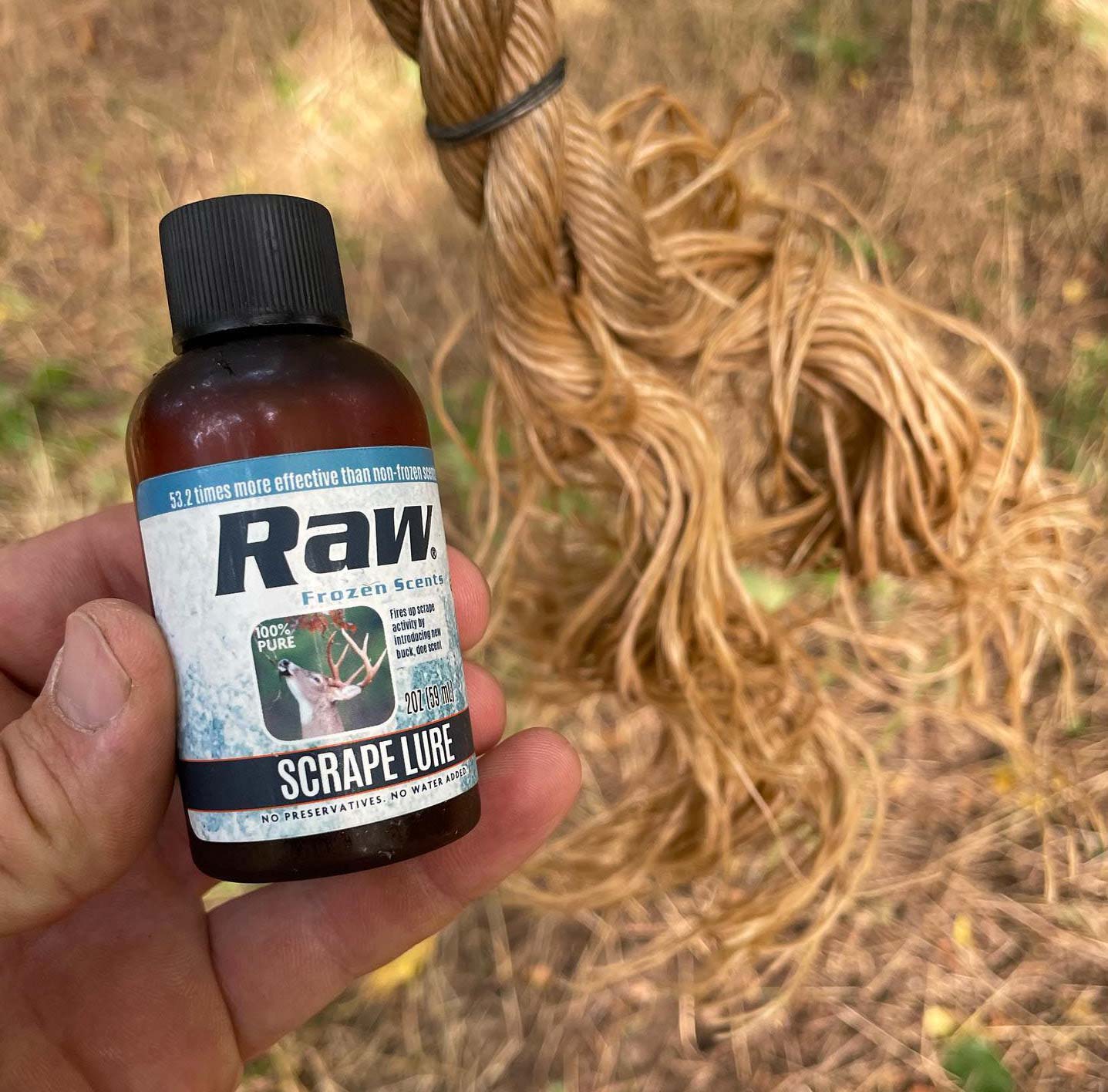
My Strategy
When I find an area that’s a natural travel corridor for deer and where bucks have scraped in the past, I try to enter the area weeks before I plan to hunt. I set up my treestand in the center of where most of the scrape activity has been occurring. Using my Vortex Optics Viper HD 3000 rangefinder, I range exactly 20 yards from my main mock scrape.
Next, I ensure a clear shooting lane from stand to scrape. After clearing the first shooting lane, I create another mock scrape in a separate direction. I range one of the mock scrapes at 30 yards and the other at 20 yards again. By having exact range measurements on all three mock scrapes, I have created three invisible range markers.
When a mature buck approaches one of the mock scrapes, it is common for the hunter to be nervous and to be focused on making a vital shot. However, with the range finder method, a hunter has the advantage of knowing the range measurement and where to aim the scope without making any unnecessary movements.
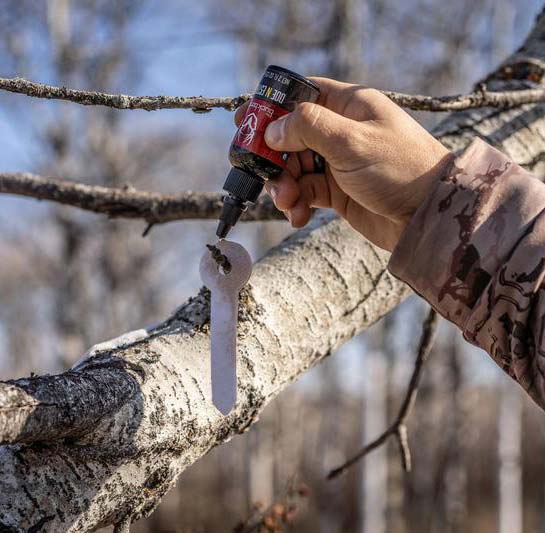
Activate Mock Scrapes
When hunters first began using mock scrapes to lure in mature bucks, there was no technology for scents and lures like what exists today. Early hunters used tarsal glands they had removed from harvested deer, and even urinated in the scrapes, to create curiosity and to try to cause bucks to replace that scent.
Fortunately today, we have access to a wide variety of scents and lures that have been collected from deer and natural blends. When used, these trigger deer to return to the scrape repeatedly. In addition, many different scent dispensers can be used to creatively release scent. They help prevent hunters from leaving too much human scent behind when they revisit the scrape to refresh it.
When creating mock scrapes at my pre-ranged yardage markers, I use a scent dispenser such as the Wildlife Research Center Super Charged Scrape Dripper. I use it with a large white scent wick or a small length of rope. All are easily visible from my treestand. That visibility offers me markers for yardage when a buck walks into the area. For scent dispensers or wicks, I place them approximately six to seven feet from the ground. Having a licking branch that points toward the treestand is vital. When the licking branch faces the stand, a buck will approach the scent by facing away from the treestand. When a buck checks the scent, the hunter has time to get a crossbow in position without being seen. The buck then provides a broadside shot at a yardage that’s been determined even before you’re in the field.
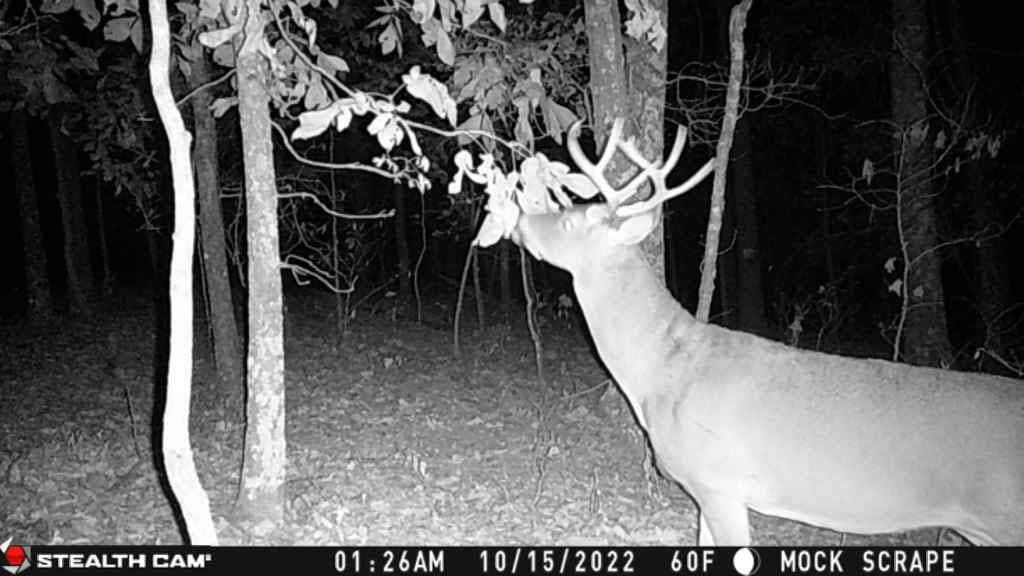
Activating the Scrape
To activate the mock scrape, I often use Wildlife Research Centers Golden Scrape inside of my scent dripper. The design allows for a slow drip for an extended period, keeping the scrape fresh for longer. When using a scent wick, I like to use a spray lure (such as Raw Frozen Scents Scrape Lure) on the ground along with one of their Big Wicks. The wick allows the scent to carry a strong odor downwind, reaching any bucks who are cruising the area so they can smell it and investigate. Another great way to broadcast to a wide scent area is by spraying an aerosol-style scent (like Buck Bomb’s Scrape Generator). The scent can be sprayed on the ground, trees, limbs and other objects to keep a strong scent in the air for a longer time.
Start Early
When creating a mock scrape, it is vital to start two or three days before you want to hunt. Placing scent there a few days early gives bucks time to start using the scrape and leave their own scent there. After the scrape has been made and after the scent is dispersed, I place a cellular game camera positioned to overlook the scrape. By watching pictures on the cellular camera, a hunter can determine when deer are using the scrape and whether a mature buck is nearby. When bucks show up, it is time to hunt.
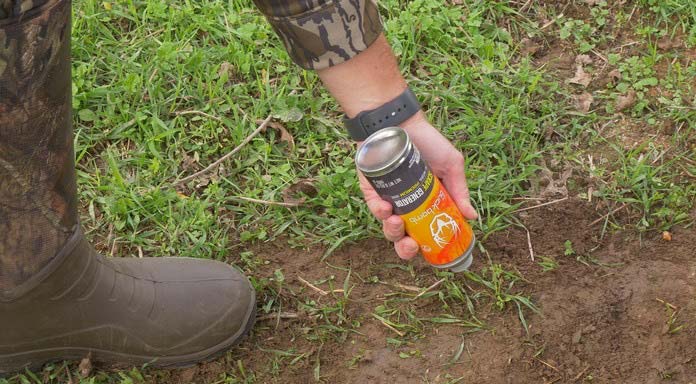
you activate scrapes GSM OUTDOORS PHOTO
Vortex Optics Viper HD 3000 Rangefinder
When bow hunting in open country or in tall timber, precision and speed can mean the difference between filling your freezer or “tag soup.”
The Viper HD 3000 laser rangefinder gives you the tools to act quickly and confidently. It works in a treestand at close range while bowhunting, and it can be used up to a 3,000-yard maximum range. It has a stunning HD optical system that lets you pinpoint big game faster at distance. Four target modes (Normal, First, Last, ELR) and two ranging modes (LOS, HCD) mean you get the flexibility to range any shot on any hunt.
Its specifications are:
| Magnification | 7x |
| Objective Lens Diameter | 25 mm |
| Reticle | HCD Corrected Shoot-To Range |
| Range Reflective (yards) | 3000 yds |
| Range Tree (yards) | 2300 yds |
| Range Deer (yards) | 2000 yds |
| Max Angle Reading | +/- 89 degrees |
| Linear Field of View | 314 feet @ 1,000 yds |
| Angular Field of View | 6 degrees |
| Eye Relief | 15.5 mm |
| Length | 4.2 inches |
| Width | 1.7 inches |
| Weight | 9.1 oz |
Wildlife Research Center Super-Charged Scrape Dripper Combo with Golden Scrape
The Super-Charged Scrape Dripper allows hunters to pattern nocturnal bucks to daytime by simulating a high-traffic area for deer. The Scrape Dripper slowly releases scent into the mock scrape, keeping it fresh and fooling bucks into thinking that another deer has been visiting the scrape more than he really has. The Scrape Dripper holds up to four ounces of scent and can last seven to 12 days, depending on conditions.
Its features include:
Higher output to simulate higher deer traffic
Can operate for up to 7 to 12 days
Patterns nocturnal bucks to daytime
Can operate for up to 7 to 12 days on 4 fluid ounces of scent (depending on conditions)
Normally shuts down during rain and bad weather (to save valuable scent)
New patent-pending, high-output scrape-dripper and Golden Scrape® with Scent Reflex® technology helps get more action faster at mock scrape locations. The combo includes: Super Charged® Scrape Dripper and 4 fl. Oz. Golden Scrape®
Per our affiliate disclosure, we may earn revenue from the products available on this page. To learn more about how we test gear, click here.



